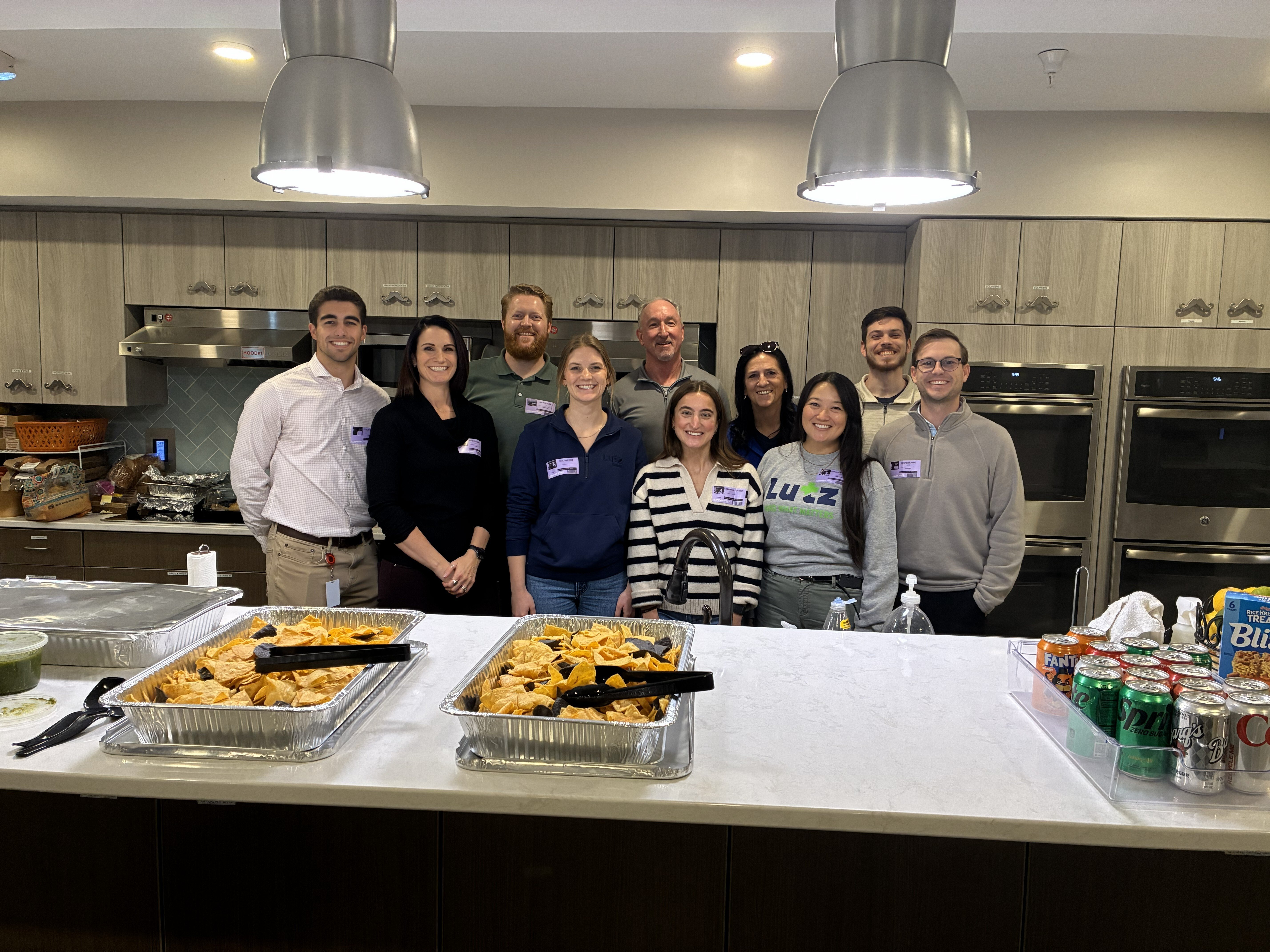Steve Guenther and Tony DeSantis
%20(1)-May-30-2024-10-01-31-2892-PM.jpg)
You've reviewed hundreds of resumes, conducted dozens of interviews, and followed your gut instincts, yet your latest hire wasn't quite the perfect fit. If this scenario sounds familiar, you're not alone. The traditional hiring process leaves a lot of room for unconscious biases, inefficiencies, and costly miss-hires.
But what if you could take the guesswork out of recruitment and streamline your efforts toward finding the absolute best talent? This is where workforce analytics can be a game-changer for your organization. It allows you to optimize your hiring process by leveraging data-driven insights for better outcomes.
What Is Workforce Analytics?
Workforce analytics involves analyzing workforce-related data to uncover patterns and insights that inform better hiring decisions. This includes data on applicant details, skills assessments, background checks, and employee performance. By identifying meaningful correlations, workforce analytics transforms raw data into actionable strategies.
The Benefits of Workforce Analytics in Recruitment
Implementing workforce analytics can significantly improve hiring efficiency and effectiveness. Key benefits include:
1. Enhanced Efficiency
Identify and eliminate bottlenecks to speed up the hiring process. Integrating predictive analytics with your applicant tracking system (ATS) can reduce time-to-hire by analyzing your entire pool of applicants and providing high-level insights.
2. Improved Quality of Hires
Use predictive models to assess candidates holistically, ensuring a better cultural and skill fit. These strategic matches will help increase retention rates and decrease turnover costs.
3. Reduced Hiring Bias
Analytics tools can help you detect and reduce unconscious biases in hiring. For example, analytics allow you to focus on job-related data, removing any demographic blinders. On the flip side, analytics can also help you discover where your company may be lacking demographically to help you prioritize hiring in those areas.
4. Cost Optimization
Analyze recruitment sources to focus on the most effective channels. If LinkedIn provides the highest-quality candidates, prioritize spending there to maximize ROI.
5. Continuous Improvement
Regularly monitor and refine your hiring process by integrating your disparate data streams to get a holistic picture of your efforts. Connecting your data allows you to visualize the bigger picture in real-time so you can make quicker adjustments.
Integrating Workforce Analytics into Your Recruitment Process
Here are five steps to integrate analytics into your recruitment process:
1. Identify Key Recruitment Metrics
Start by pinpointing the metrics that matter most to your unique recruitment goals. These could include time-to-fill, cost-per-hire, quality of hire, diversity of candidate pool, and more.
2. Collect Data
Gather data from all pertinent sources, such as your ATS, human resource information system (HRIS), job boards, and direct candidate feedback. Ensure this data is accurate, complete, and aligned with your recruitment objectives.
3. Analyze and Interpret Data
Leverage analytics tools to mine your data for meaningful patterns, trends, and correlations. These insights will form the foundation for data-driven recruitment decisions.
4. Take Action Based on Insights
Use your findings to refine your hiring processes strategically. This could involve optimizing job ad placement, implementing AI-driven candidate screening, or restructuring interviews based on predictive performance models.
5. Measure and Monitor Outcomes
Continually track key metrics to gauge the effectiveness of your analytics-based improvements. This validation process allows you to quantify the ROI of your strategies and identify areas for ongoing refinement.
Integrating workforce analytics tools and strategies into your hiring workflow allows you to transition from making gut-based decisions to data-driven optimizations. However, navigating the complexities of workforce analytics on your own can prove challenging.
The Lutz Talent Advantage
At Lutz Talent, our experienced recruiting specialists work hand-in-hand with our skilled data analysts to help you seamlessly incorporate analytics into your hiring function. With our multi-divisional expertise, cutting-edge tools, and holistic approach, we'll ensure you're not just collecting hiring data - but translating it into action and results. If you're ready to revolutionize your recruitment process, contact us.

- Strategic, Achiever, Individualization, Arranger, Futuristic
Steve Guenther
Steve Guenther, Talent Director, began his career in 1986. After nearly three decades in retail leadership, he transitioned into staffing and quickly found his niche in recruiting and relationship management. Before joining Lutz, he spent over four years at another search firm, building strong client partnerships and a reputation for thoughtful service.
Focusing on search and staffing, Steve works directly with hiring managers to understand their business, culture, and personnel needs. He collaborates closely with the Lutz Talent team to ensure each role is filled with care, attention, and alignment to the client’s long-term goals. His day-to-day involves everything from building job profiles and screening candidates to facilitating interviews and guiding successful placements.
At Lutz, Steve has a gift for seeing both the big picture and the person in front of him. He builds trust by meeting people where they are—whether it’s a business seeking clarity on their next hire or a candidate navigating a career change. His thoughtful, measured approach and ability to tune into the unique needs of each situation make him a steady presence and a valued partner to both clients and colleagues.
Steve lives in Papillion, NE, with his wife Jeani. Outside the office, you can find him spending time with family and grandkids, golfing, hunting, and cheering on the Huskers.

- Maximizer, Deliberative, Consistency, Adaptability, Relator
Tony DeSantis
Tony DeSantis, Data Analytics Shareholder, began his career in 1999. With over two decades of experience in data analytics and forensics, he has honed his skills in interpreting complex data sets and designing impactful visual reports.
Leading Lutz's Data Analytics offering, Tony specializes in data management and the application of artificial intelligence to simplify business processes and create solutions that directly impact their bottom line. He values the firm's unique blend of technical skills and business expertise, which enables them to provide well-rounded solutions to their clients.
At Lutz, Tony is passionate about mentoring and developing emerging talent within the firm. Additionally, he has been actively involved in various policy committees, contributing his expertise to shaping the firm's strategic direction. As the leader of the data analytics team, he consistently strives to make the complex simple for clients, helping them uncover the stories hidden in their information.
Tony lives in Omaha, NE, with his wife and four children. Outside the office, you can find him attending and coaching his kids' sporting events and other activities.
Recent News & Insights
Lutz Gives Back + 12 Days of Lutzmas 2025
Tis the Season... For Market Forecasts
Tired of Complex Books? 8 Ways to Simplify Your Accounting
HR Solutions That Elevate the Employee Experience




%20(1).jpg?width=300&height=175&name=Mega%20Menu%20Image%20(2)%20(1).jpg)
%20(1)-Mar-08-2024-09-27-14-7268-PM.jpg?width=300&height=175&name=Untitled%20design%20(6)%20(1)-Mar-08-2024-09-27-14-7268-PM.jpg)

%20(1)-Mar-08-2024-09-11-30-0067-PM.jpg?width=300&height=175&name=Untitled%20design%20(3)%20(1)-Mar-08-2024-09-11-30-0067-PM.jpg)
%20(1).jpg?width=300&height=175&name=Mega%20Menu%20Image%20(3)%20(1).jpg)
%20(1).jpg?width=300&height=175&name=Mega%20Menu%20Image%20(4)%20(1).jpg)
%20(1).jpg?width=300&height=175&name=Mega%20Menu%20Image%20(5)%20(1).jpg)
-Mar-08-2024-08-50-35-9527-PM.png?width=300&height=175&name=Untitled%20design%20(1)-Mar-08-2024-08-50-35-9527-PM.png)


.jpg)




